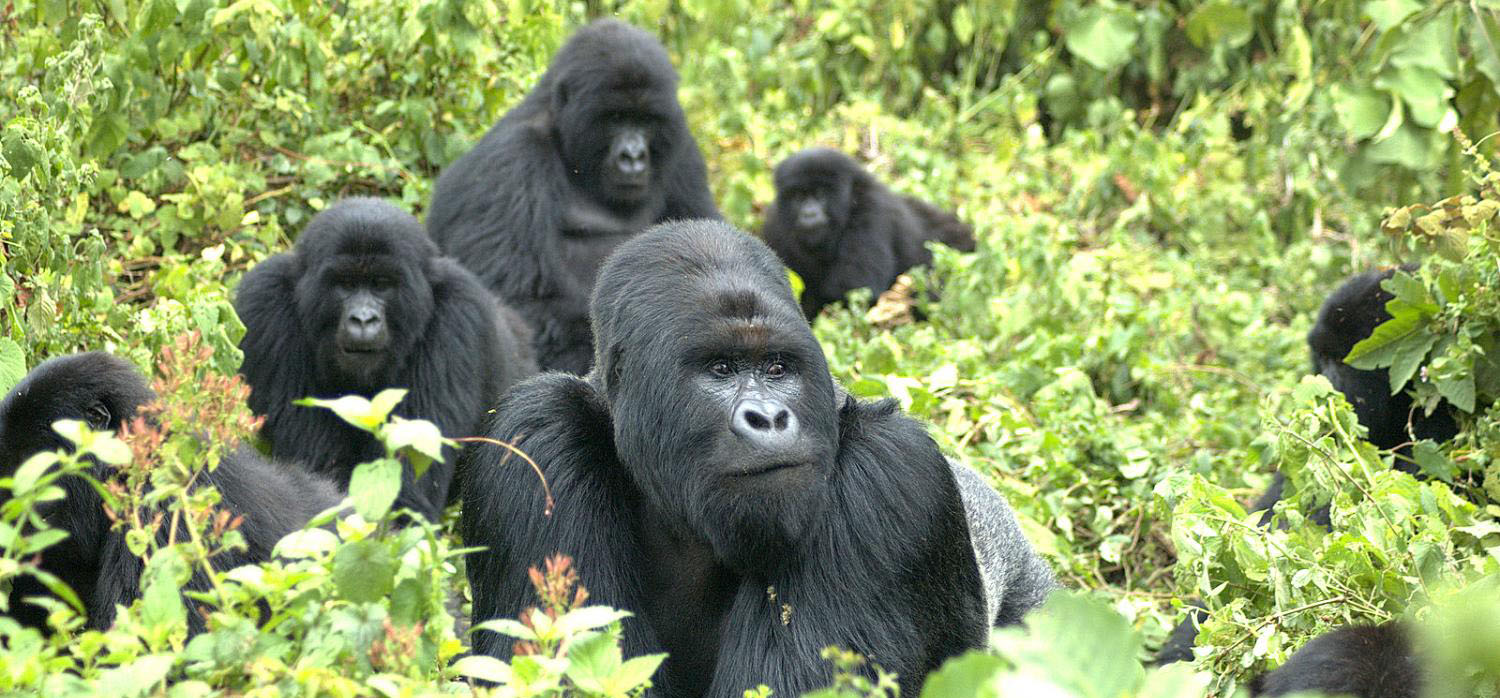 Mountain gorillas live in social groups of families. The number of mountain gorillas may vary from as low as 2 to as many as 65 though the average size of a gorilla family is 15 members.
Mountain gorillas live in social groups of families. The number of mountain gorillas may vary from as low as 2 to as many as 65 though the average size of a gorilla family is 15 members.
Each gorilla group is made up of several families and their young ones which are all led by one strong male known as- the silver back.
An adult male mountain gorilla can be about 6ft when standing on two legs and this is taller than the average height of an adult human.
Mountain gorillas have unique nose prints unlike humans who have unique finger prints.
The gorillas have opposable digits both on their hands and feet.
The average life span of mountain gorillas is in the mid 30s although the oldest gorilla recorded died at 63 years.
Male gorillas can weigh up to 450 pounds
Young gorillas stay close to their mother up to around 3 years while they completely leave their family at around 10 years especially males.
Female mountain gorillas reach breeding stage after 10 years. They normally give birth every after 4-5 years; with a gestation period of eight and a half months.
Mountain gorilla teeth and tough are stained black due to the dannins in their diet.
Have more coarse hair on their body than other gorilla species due to living at a higher altitude which is colder.
Regularly, mountain gorillas construct their nests in which they sleep every night.
They mourn their dead while crying and after try to cover the body of the deceased with leaves and tree branches.
At birth the in fact can weigh about 4 pounds.
When silver backs and black backs fail to find females to form their own groups, they end up forming all- male families called bachelor groups.
Around 13 years, male mountain gorillas start growing silver hair on their backs and before this age they are called black backs.
They usually beat their chest and this maybe a sign of playing or aggression depending on the circumstances they find themselves.
Mountain gorillas are found only in three countries in the world- Uganda, Rwanda and Democratic Republic of Congo.
Majority of the mountain gorillas live in Uganda’s Bwindi Impenetrable national park while the rest live in Mgahinga gorilla national park (Uganda), Volcanoes national park (Rwanda), Virunga national park (Democratic Republic of Congo).
Some mountain gorilla families switch locations between Uganda and Rwanda in search for food and an increased habitat.
Trekkers are allowed one hour to speed with the mountain gorillas.
Karisoke research center in Volcanoes national park in Rwanda is the longest running research site in the world, being in existence for over 50 years.
Mountain gorillas are divided in to two major species namely the eastern gorilla and the western gorilla. Each gorilla has two sub species including mountain gorillas and low land gorillas under the Eastern gorilla while western low land gorilla and cross river gorilla belong to the Western gorilla groups.
The gorillas live in mountainous rain forested parks. These include Uganda’s Bwindi impenetrable national park and the other in the Virunga mountains- in three adjacent national parks- Mgahinga gorilla national park, Rwanda’s volcanoes national park and Virunga national park in Democratic Republic of Congo.
Mountain gorillas are generally herbivores which feed on vegetation. They feed on wild celery, shoots, roots, fruits, tree bark and pulp; they also eat small animals and insects. A male mountain gorilla can eat up to 18kg of vegetation each day.
They are one of the biggest, most powerful living primates with an average male weighing about 180kg and 170cm tall.
The mountain gorillas are under threat (endangered) because of degradation of their habitat, diseases and snares intended for bush meat which accidently harm the gorilla.
